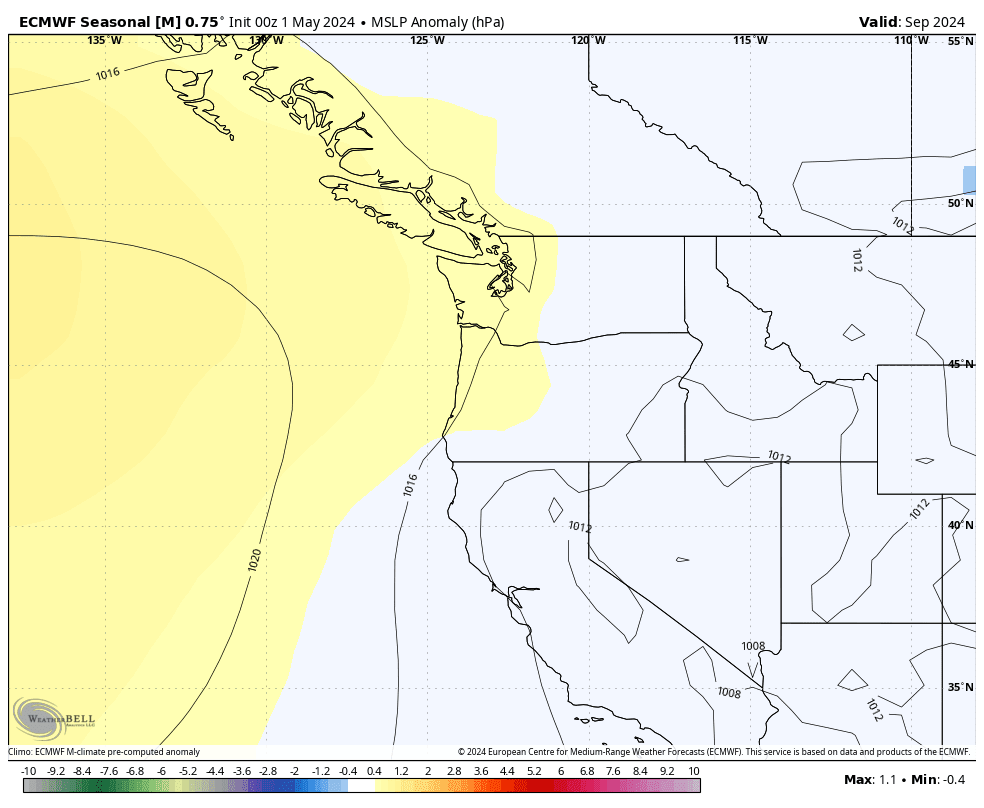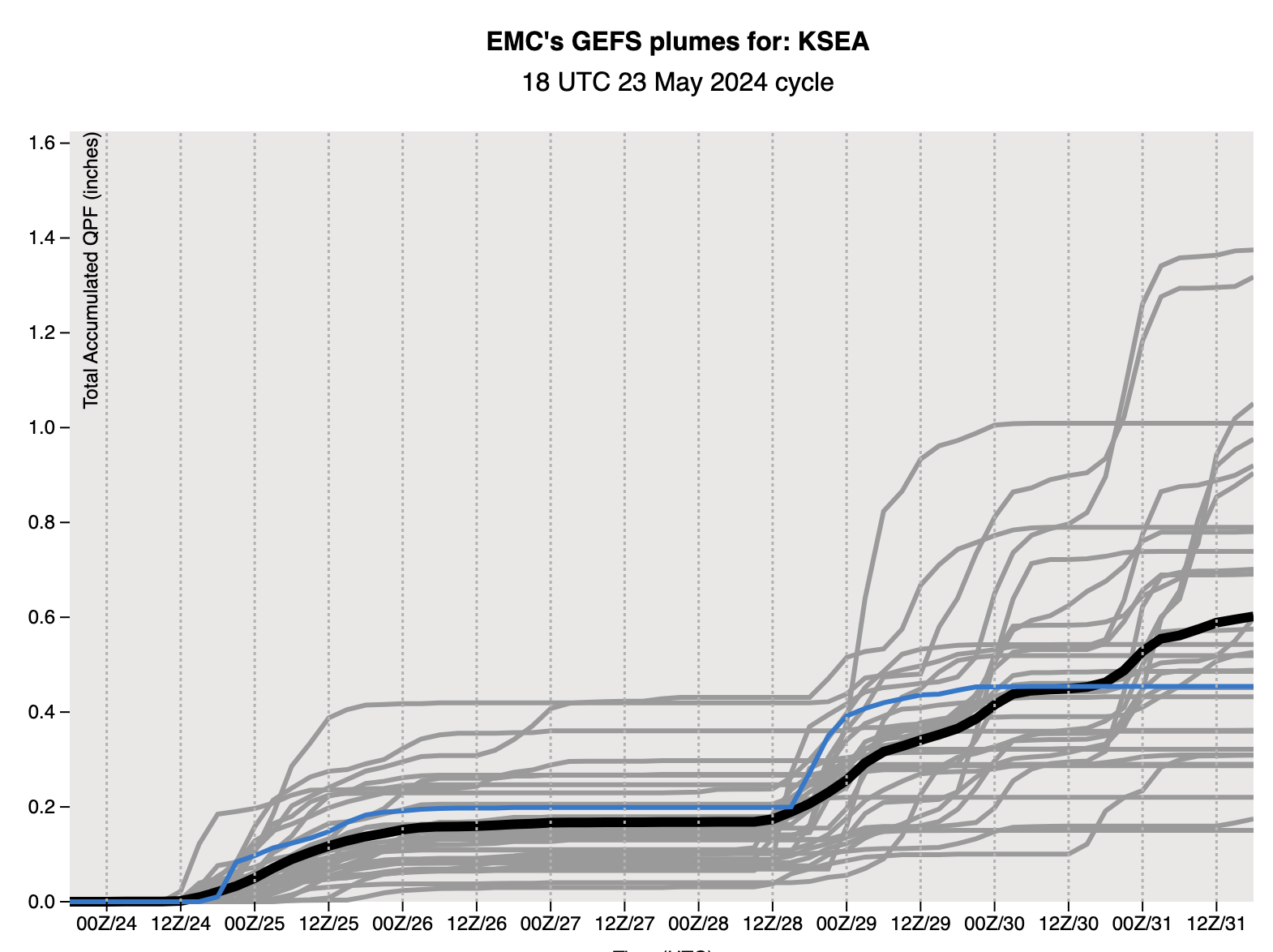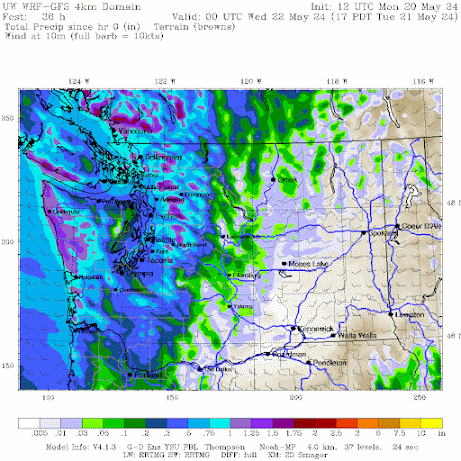We are about to begin a historic rain event, with the one or two-day rainfall being in the top five of the historical record over Puget Sound. Some other locations we do even better.
Impressively, the Snoqualmie River is predicted to flood with record-breaking flows for any day in late May or the first half of June.
The rain will start mid-day on Sunday and it will go on for several days.
Let's start with the predicted total precipitation through Tuesday morning (below). Just wow...much of our mountain areas will receive over 3 inches, with limited areas getting over 5 inches.
An extraordinarily intense atmospheric river, one quite rare for early June, will slam into the region. The water vapor transport map for Sunday afternoon illustrates this (see below). This would be impressive in November. In June, startling.
The sustained heavy rain is predicted to take the Snoqualmie River to flood stage--and the highest level ever observed this time of the year (see plot below from the NOAA/NWS Portland River Forecast Center). The orange line shows flood level and the upturned red arrows show the highest historical levels for each day.
How unusual is the event?
Below are the top ten precipitation values for SeaTac for the first half of June. The current predicted two-day total at that location is about 1.5 inches, so could enjoy the third or fourth wettest totals since 1945,
Keep dry!
_____________________________________
Announcements
I will be doing a podcast about the event later today.
I will be teaching ATMS 101 this fall--the introductory atmospheric sciences class.
The class will be BOTH in person at the UW and available over Zoom. Thus, folks can take it remotely.
If you are over 60, you can take the class through the ACCESS program for a very nominal charge (something like $20). During the past few years, several hundred have done so.
So if you are a UW student looking to learn about weather or a non-student interested in the topic, I welcome you to join me this fall.









































.gif)





